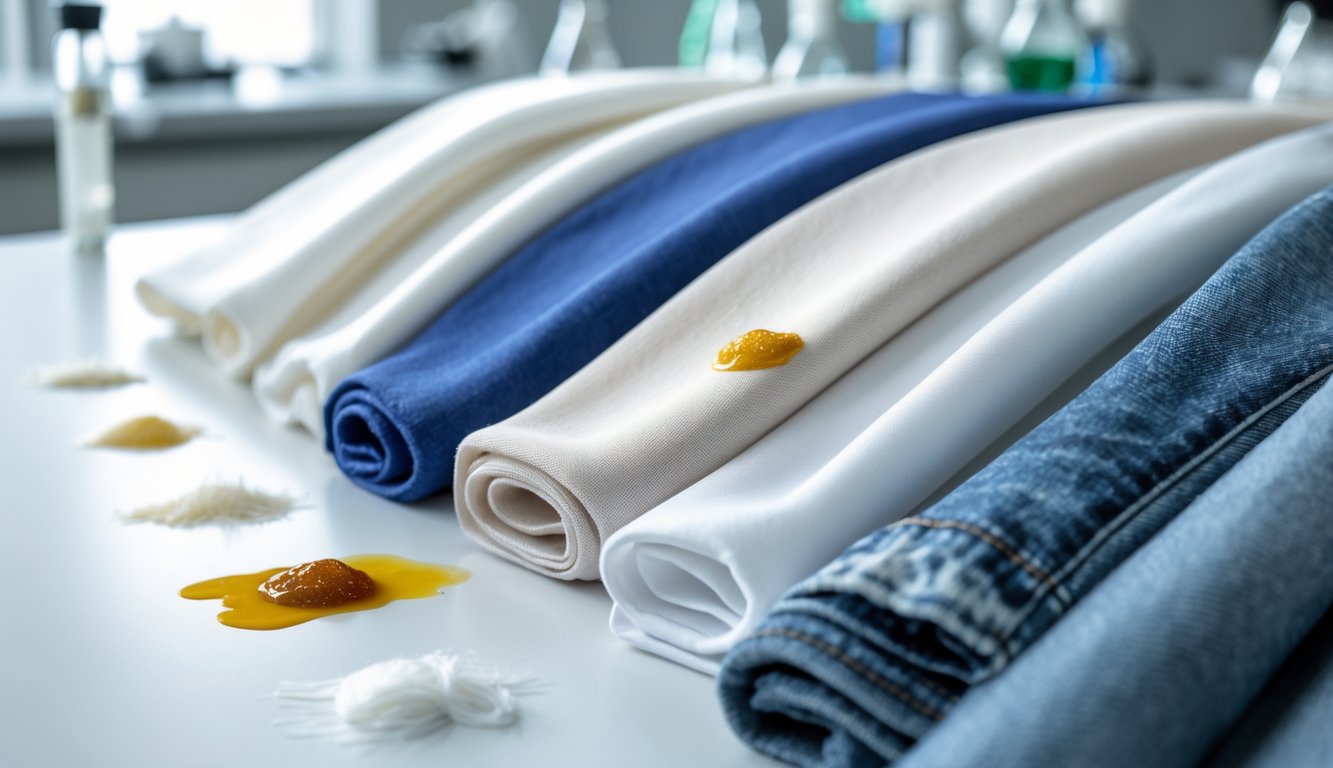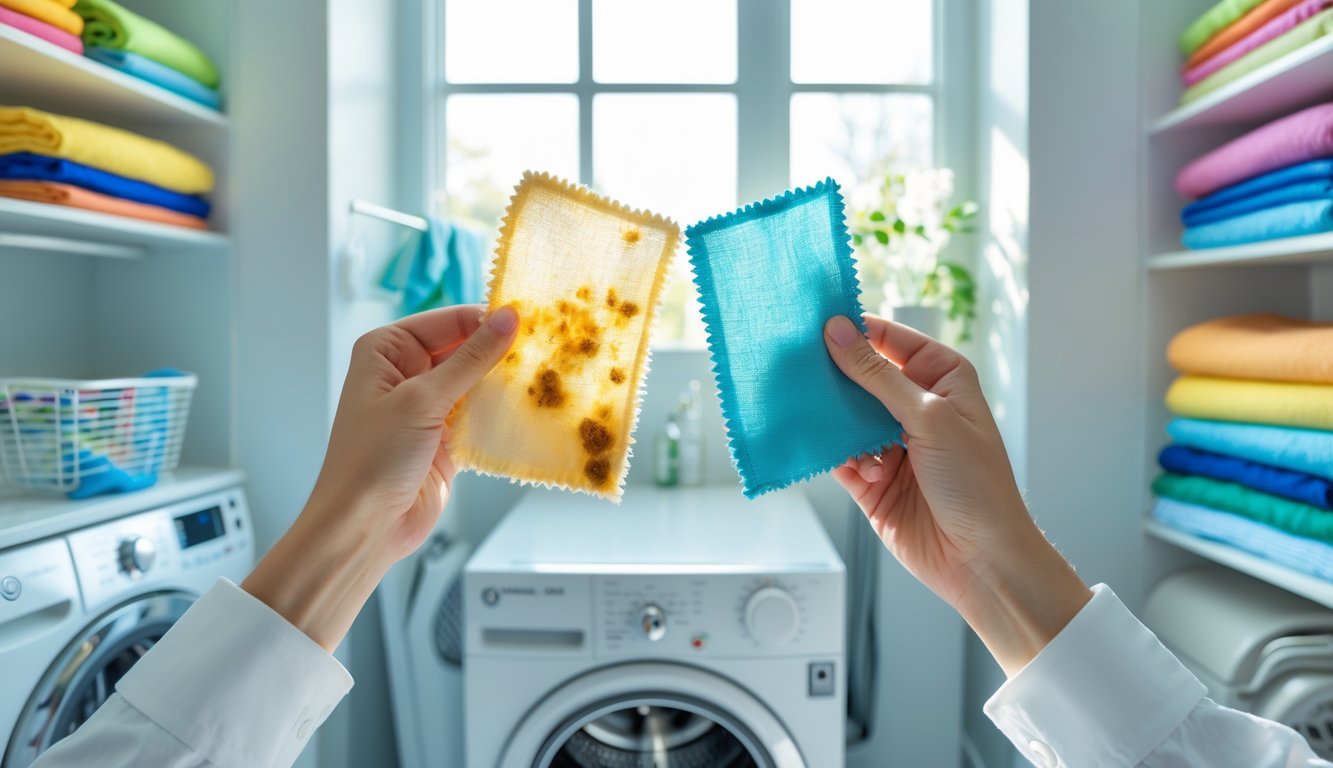
Chemical Treatments and Coatings
Every time I dump coffee on myself, I start reading those chemical names on the tag—seriously, who remembers what PFAS even stands for when you’re panicking over a spill? Fabric coatings might block stains, but figuring out which ones are safe or even worth it is a nightmare. It’s all trade-offs, research rabbit holes, and, yeah, no miracles.
Common Chemical Coatings Used in Fabrics
Acrylic, polyurethane—unless you’re into patent filings (I’m not), you probably don’t know these are everywhere in stain-resistant fabrics. The industry loves to brag about “non-toxic, PFAS-free” stuff, but most “advanced” formulas are just plastic coatings. Recent reviews and chemical surveys confirm it.
Polyacrylates block grease for a bit, but then attract lint or leave a sticky feel. Polyurethane works for water, but sometimes turns your shirt into a sauna. “Eco” and “bio-based” coatings? They sound good, but half the time they quit working unless you bust out industrial detergent. My dermatologist friend says even “gentle” coatings can mess with your skin, especially if you air-dry. Pet owners, kids, eczema people—yeah, you know.
Teflon, Crypton, and Fibreguard Explained
Teflon’s everywhere. It’s PTFE, same as nonstick pans. Supposed to make spills bead up, but after ten washes, forget it. I bought “spill-proof” chinos—promised miracles, then tomato sauce ended their career. Not shocking. Now, with PFAS under fire, big brands are switching to PFAS-free coatings: linear PDMS, silicone emulsions, slightly less toxic, but not as tough as the old stuff.
Crypton’s the go-to for hotel lobbies and public seating—“moisture barriers,” antimicrobial, engineered layers. They block stains better, but get stiff and sometimes stink with heavy use. Fibreguard uses newer polymer blends, skips the worst chemicals, but real-life durability? Meh. Their warranties are longer than my last lease, but in my living room, gravy still wins.
Impact on Health and Hygiene

Grabbed another lab coat—stains everywhere. Is that better than the chemical-smelling waterproof ones? Not sure. I’ve spent way too much time in “stain-resistant” yoga pants, button-downs, and kids’ uniforms. They all promise ridiculous cleanliness, but it’s the stuff you can’t see that bugs me. Oh, and antimicrobial socks? They never dry right. What’s up with that?
Health Risks of Chemical Additives
Alright, so here’s what keeps bugging me: stain-resistant fabrics? PFAS. You know, those “forever chemicals” everyone’s whispering about but nobody seems to actually avoid? Almost three-quarters of stain- or water-resistant stuff—raincoats, bedding, yoga pants, whatever—are basically marinated in PFAS, at least according to this Verywell Health piece I doomscrolled last week. The skin contact is gross enough (seriously, I broke out in a rash that only vanished after I ditched my “high-tech” sheets for ancient cotton), but it’s the long-term stuff that’s actually terrifying. Liver problems, thyroid drama, immune system weirdness, and, yeah, cancer. Fun.
And the additives don’t even discriminate. I grilled a textile chemist—she claimed some “antibacterial” finishes sneak in heavy metals. So, what, now we trade stains for metal exposure? Love that for us. Oh, and those “permanent” coatings? They peel off, float around your living room, and you end up breathing them in. Why does nobody mention this at school meetings? Instead, our kids do gymnastics on these chemical mats and we just nod along.
Hygiene Benefits in Sensitive Environments
Hospitals, though—different beast. Disposable scrubs everywhere (lint tornadoes, but whatever, who’s judging). In medical settings, I’ve watched antimicrobial finishes do their thing against germs—nobody ever says thanks, but I notice. Functional fabrics can actually kill or at least slow down bacteria, so wound dressings and uniforms don’t turn into germ parties. I’d count my ER runs in the break room and just thank the universe for non-cotton gear, honestly.
But, yeah, the coatings fade. Sometimes way faster than you’d guess; I checked two brands of scrubs—one still had some resistance after a dozen washes, the other was basically a regular shirt by then. And those “odor-resistant” gym shirts? Usually just a chemical arms race I never signed up for. The hype is wild, but the reality? Half the time, it’s just marketing. Especially if you’ve got eczema or your immune system’s a mess—one wrong finish and it’s rash city. Pick your poison: bacteria or burning skin.